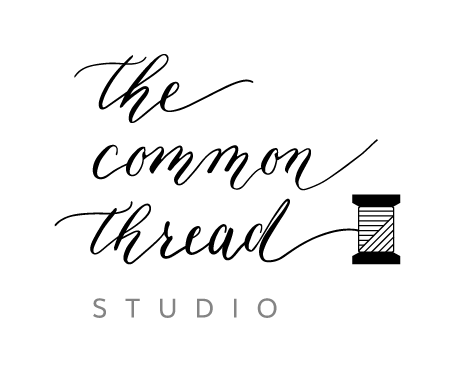Essential Sewing Supplies
As a child I remember rummaging through my mother’s lightweight yet cumbersome yellow, plastic sewing box. At the time, I had very little experience with sewing except that my grandmother helped with our mending and I had also learned to cross stitch. And yet, as a child it felt magical to sift through all the contents of the box, as if it were buried treasure.
Again, I recently went through my mother’s now vintage sewing box in an attempt to help organize her supplies. I was inspired to find her old iron on embroidery patterns that we had both used over the years for hand sewing. There was a homemade pincushion and many memories to gather amidst the tools too. I think this has been most surprising to me when considering sewing. My mother didn’t particularly aspire to sew, yet I still feel that sewing left an impression with me as a child.
The sewing tools were captivating to me, much like any craft of using your hands to make beautiful things can be. The supplies for sewing are a lovely assortment of practical and meaningful tools. I think their usefulness as part of everyday life made sewing more commonplace in my childhood than I may have realized. I still have keepsakes that my grandmother sewed for me too. I imagine many have similar cherished handmade items, that often serve as an inspiration to begin sewing in the first place!
In some regard, I think what you have in your own toolkit will vary depending on what you choose to sew. To list a few… will you sew garments, embroidery, quilts or do you hope to do alternations? Different tools will be necessary for specific sewing techniques. For this reason, a sewing kit really grows over time as you continue to develop new skills and your needs change. I have added many new quilting notions to my toolkit recently, new measuring tools, specific pressure feet, rotary cutters, cutting mats, and securing tools like basting pins.
However, there are certainly essentials for every beginner. Here is my best list to share with you. If I could take you through the aisles of your local shop and gather a few notions together, these would be the basics.
Notions are any object that is used to complete a sewing project:
Sewing Machine Needles : These are high quality and recommended for your machine safety and care. An 80/12, universal needle is a perfect for most sewing. However, different fabrics will require a specific needle, like denim or stretch fabrics.
Seam Rippers: A must have tool for removing unwanted stitches. It helps to have one that can be held comfortably.
Pincushion or Magnetic Pincushion: organize your pins. I recommend having more than one. One is placed at my machine and another at my cutting table where I secure the pins and then, where I’ll remove them.
Thread: Essential! I enjoy using All -Purpose Guterman thread that I trust will care for my machine.
Bobbins: These become a collection as you begin to sew in varying colors. It helps to have extra available.
Seam Allowance Guide Tool: I use in the studio to help children follow the seam allowances if they’re having difficulty! Washi tape is another great support.
Marking Tools
Tailor's Chalk: For tracing your pattern onto the fabric and copy other pattern markings.
Measuring Tools
Measuring Tape or a Retractable Measuring Tape: Used for precise measurements with sewing garments especially.
Seam Guage: Used for making small, precise measurements like hemming skirts or pants.
Cutting Tools
Fabric cutting shears: Reserved only for cutting fabric. These are a quality and long lasting brand.
Fabric Shears & thread snip set: A cost effective set that is functional and also used in the studio.
Pinking Shears: Necessary for removing fray on the raw edges of fabric, while also reducing extra bulk.
Thread snips: These are kept next to the sewing machine to remove threads.
Rotary Cutter: An optional tool but are especially helpful if you’re interested in quilting.
Securing Tools
Glass Head Sewing Pins: Pin your project prior to sewing.
Wonder Clips: I enjoy these for sewing zippers and specific projects, or especially when working with children.
*These affiliate links support our family & studio if you purchase an item. Thank you!
*Photos by Annie Blanding, La Reverie Photography.





